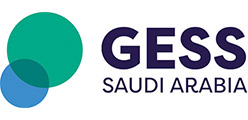Twenty-First Century Students are 'Digital Natives'.
After coming across an article online last week (ironically and inadvertently foreshadowing the thread of this article), describing how the University of East London is issuing every first year student with a tablet pre-loaded with course information and recommended reading I began thinking. Should this policy not be more widespread across education systems of all ages worldwide? Is the use of technology in the classroom as widespread and encouraged by administrators as it could or should be?
Despite the obvious pitfalls of cost, having been lucky enough to have used an iPad all the way through my history degree I fully appreciate the positive impact that a piece of twenty-first century technology can have in the classroom. Access to e-books meant I didn’t have to lug piles of heavy books to and from the library, and further information was available instantly at my fingertips. With university fees, especially in the UK being so astronomically high, is this not the least students should expect in return for their investment? Provision for the most up to date, effective way of learning to which they will be the most receptive. The chairman of the JS Group who is managing the scheme at the University of East London described today’s students as, “digital natives.” Having only graduated from university myself this summer, I wanted to find out more about this term and what exactly it meant.
“Digital Native” was a term coined by Marc Prensky back in 2001.[1] Prensky, who is an internationally acclaimed speaker, author and innovator in the field of education, asserted over a decade ago that students had changed. So much so that the traditional education system was no longer able to best serve their educational needs. Generations of students have grown up surrounded by computers, video games, instant messaging and smartphones, seemingly from an increasingly younger age. The result being that twenty-first century students think and process information differently. For Marc Prensky they are, “native speakers of the digital language of computers, video games and the internet”, or ‘Digital Natives.’ For Prensky, the education system back in 2001 was suffering from a battle between the needs of the modern, ‘Digital Natives’ and those in charge of the education system who he referred to as ‘Digital Immigrants.’ Digital Immigrants are those of an older generation not born in the digital age, who although learn and, “adapt to their environment” of a digital age, will nonetheless retain much of their traditional pre-digital behaviours, turning to the internet for information second for example. The problem being that digital natives are used to receiving information instantaneously, to multi-tasking and to look at graphics before text. Although the education system has digitised to some extent since Prensky was writing in 2001, through the use of e-books and interactive whiteboards for example, there is still a case for saying that those in charge of education (teachers and administrators) are still digital immigrants, struggling to teach and engage a population who are essentially speaking a new language.
In our world of continuous streams of information, instant feedback through smartphones, tablets and laptops, there is surely more that can be done to engage students by embracing these wonderful tools of communication and information sources that we now take for granted it seems everywhere but education. From my own personal experience, having just left university this year there is no doubt education is starting some come round to the benefits of digital learning. Like many across the country, my university library was and is still investing heavily in digitising its library collection, making many key titles available online to access on or off campus. E-books offer students quicker and easier access to information, without having to sift through piles of textbooks. However the problem remains that in order for students to fully utilise this, it relies on them owning an expensive tablet or laptop, which is why I think the University of East London’s scheme of providing them for their students such a good idea. Administrations and institutions should be encouraged to embrace and provide such devices, and therefore opportunities for everyone. Once it is universally recognised that technology can be successfully implemented in education, and furthermore, that it is in fact the way twenty first century students need and want to learn, more funding could be allocated to the provision of systems that fully embrace the potential of digital learning.
The use of technology in the classroom and across education should not be seen as a gimmick, or as a sign that modern students are lazy or incapable. It should be seen as a necessary part of a twenty-first century education, which inspires and interests children at an early age and expands and diversifies learning at a higher level.
Luckily for the Digital Native students of today, Thomas Ketchell, the CEO and Founder of Hstry is attempting to bring about and inspire a change to the way that history is taught in classrooms through the use of technology. Hstry is a digital learning tool where teachers and students alike can create their own interactive timelines. Embedded social features promote collaboration and engagement between students.
This month, we are lucky enough to have spoken to Thomas and have him explain a little more about the project and what we can expect from his keynote speech at GESS 2015.
In Conversation With ... Thomas Ketchell, Hstry: http://www.gessdubai.com/news-center/interviews/conversation-thomas-ketc...
[1] Mark Prensky, ‘Digital Natives, Digital Immigrants’, On the Horizon (MCB University Press, Vol. 9 No. 5, October 2001).





